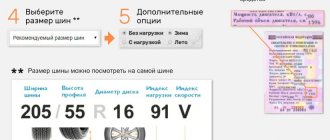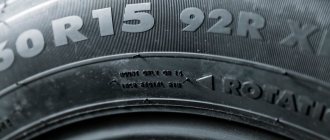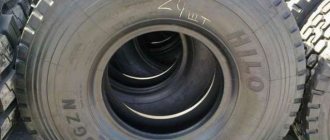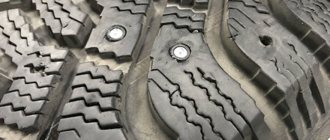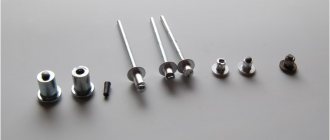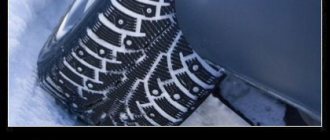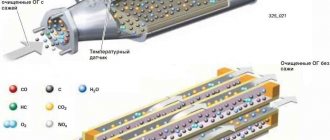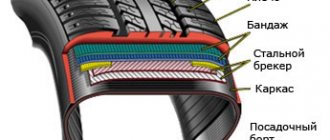Introduction
Relatively recently, a new tempting offer has appeared in many service centers in Russia - inflating tires with nitrogen. It is worth noting right away that the service does not have domestic roots; a similar method is used in Europe and the USA for refilling tires of commercial vehicles or buses. The operating rules of any car do not say about the need for this procedure; most likely, this is the choice of the car owner himself. For the first time, wheels began to be pumped with nitrogen during Formula 1 races. A mixture of nitrogen and air filled the tires of racing cars, although according to the regulations for high-speed racing it is allowed to drive on ordinary air. Every car enthusiast has the right to decide for himself whether he needs such a procedure or not. If you listen to the opinion of the employees of the service station where this service is provided, nitrogen refilling is simply necessary, and the car owner will be told about the mass of advantages gained. However, most automotive experts are confident that this is nothing more than a new marketing ploy that allows service centers to simply siphon extra money from unscrupulous motorists. Let's deal with everything in order.
Gas injection technology
From a school physics course we know that the surrounding air already contains 78% nitrogen (meaning volume fractions). The remaining 22% is distributed between oxygen (almost 21%) and a good dozen different gases, whose share is about 1%. Also, water vapor is dissolved in the air, amounting to 0.2 to 2.5% of the volume of gases. This value varies depending on the weather, season and latitude.
The essence of the technology is simple: extract 78% of the gas from the air and fill car cylinders. In practice, nitrogen is pumped into tires as follows:
- The wheel valve is connected by a hose to an automatic vacuum-nitrogen installation.
- After switching on, the unit completely sucks out the air mixture from the tire.
- Having passed it through a system of special filters and a dryer, the installation produces nitrogen with a purity of at least 95%.
- The purified gas is pumped into the wheel in compliance with the pressure required by the manufacturer.
By treating ordinary air, a nitrogen generator not only removes oxygen and other impurities, but also traps water vapor. This fact should be taken into account in further consideration of the issue in order to separate the real pros and cons of the procedure from myths.
Reference. Technical specialists serving Formula 1 races and various rallies do not face such a question. The slopes of all cars are filled with nitrogen by default.
Benefits of Nitrogen
The ordinary air that every person breathes consists of 3/4 nitrogen and only 1/4 oxygen. Due to the fact that nitrogen molecules are significantly larger in size compared to oxygen molecules, when pressure leaks, oxygen and vapors, which are present in small quantities in tires, come out of the wheel. Emerging through the walls of the chamber, oxygen promotes oxidation of the cord, bead ring and disc. As a result, the strength of the tire and the level of safety while driving decreases.
A tire inflated with compressed air typically leaks at approximately 0.09 atmospheres per month. Due to its chemical characteristics, oxygen is able to penetrate the tire walls by 40% faster than nitrogen. It is almost impossible to eliminate penetration; it will continue until the same gas pressure is created. However, if you follow the rules and pump oxygen into the tire, the level of which for passenger cars will not exceed 5%, and for trucks 2.5%, the partial pressure will be balanced and a leak will not appear.
Disadvantages of injecting wheels with nitrogen
There are pros and cons to inflating tires with nitrogen. What should a driver who is offered this service at a service station do? Of course, this method cannot be limited to only positive aspects, and in the end it is not as effective as it might seem from the words of consultants. Thus, the main disadvantages of injecting wheels with nitrogen, which are a reality of life and based on scientific facts and many years of practice of driving a car by professionals, are listed in the following list:
- The cost of the procedure, since when the wheels are inflated with an air mixture, it is pumped by a compressor directly from the atmosphere, which reduces the cost of the service to almost zero.
As for nitrogen, it is almost impossible to obtain it directly from the surrounding air at home, despite the fact that it predominates in the chemical composition of the earth’s atmosphere. Thus, it is produced in laboratory conditions, filled into cylinders and delivered to the place of sale according to the seller’s order.
- The second important problem is that if the nipple is leaking or there is some other reason for the loss of pressure in the wheel, you can, of course, pump it up right on the road with a portable car compressor. But all the positive effect of nitrogen inside the wheel will be immediately lost.
To prevent this from happening, the compressor must have a special adapter to be able to switch the source of gas intake from the atmosphere to a nitrogen cylinder, and it must also be in the car enthusiast’s arsenal.
Composition of atmospheric air
Advantages of the modern process
The use of nitrogen, according to service station employees, brings considerable benefits to its owners:
- tires practically do not wear out or age, the possibility of wheel corrosion disappears, this is ensured due to the complete absence of moisture and dust - all those particles due to which the performance of wheels regularly decreases;
- Tire explosion is reduced to a minimum. During long driving at high speed, the tires do not heat up or expand, and there are no brake slips;
- The tire pressure level stabilizes. If with normal air you have to check the pressure level every two weeks, then nitrogen in the tires allows you to “forget” about it for 1.5 months.
- grip on the road surface increases. Pure nitrogen has an increased level of damping properties, due to which the wheels function as another shock absorber;
- The driver and his passengers will be able to pass through various potholes and inclines of the road as smoothly and gently as possible;
- tire depreciation increases, while reducing the load on the car’s suspension;
- driving your own car becomes simpler and easier;
- the car acquires additional stability when cornering, during lane changes and exits;
- braking distance is significantly reduced and road grip is increased;
- during a sudden start of movement, wheel slip disappears or is reduced to a minimum;
- while driving, the car “walks” along the road almost silently, that is, the noise that usually appears as a result of the tires touching the road decreases or disappears;
- Filling the wheels with nitrogen allows you to reduce fluctuations in pressure levels, and this happens regardless of the speed of movement, the load of the machine and environmental indicators;
- Tire wear and wheel damage are reduced during unforeseen situations, for example, when a wheel gets into holes or hits curbs;
- the material from which the disc is made does not oxidize.
However, the main argument that the service center workers give is not an improvement in the performance of the tire, but complete safety guaranteed to the car owner while driving on any road surface.
The pressure level in tires with nitrogen remains virtually unchanged
Myths and reality of nitrogen pumping
Every car enthusiast who knows this method of inflating tires has a definite opinion on this matter, and it does not always coincide with the facts advertised by consultants in service centers. Thus, numerous reviews from drivers about the use of nitrogen in the tires of their own cars indicate the following facts and myths:
- Why are wheels pumped with nitrogen and how effective is it? There is an opinion that when driving on tires whose pressure is created using nitrogen, a driver will experience more comfort than one who uses regular air. Yes, indeed, the same pressure created by nitrogen will somewhat soften the depreciation of the vehicle, but this factor is almost invisible. If the driver sets the air pressure inside the wheel not to 2.2 atm, as is written on the threshold of the driver’s seat, but to 0.05 atm. less, the effect will be absolutely comparable.
Thus, no matter how carefully the vehicle is operated, wear always begins from the outside - when the treads come into contact with asphalt or other rubber elements come into contact with an aggressive environment. It is this part that will deteriorate much faster than the inner layer of the tire.
The same people who are trying to present these highly specialized methods of injecting pressure into the life of a simple car enthusiast are simply conducting commercial activities and trying to provide the most effective advertising campaign.
We can say with complete confidence that for an ordinary driver who operates his car on city roads or country roads without any competitive goals, this service is completely useless. They can always get by with practically free inflation of the wheels with atmospheric air, which can be done in any conditions - both at a tire shop, and just on the road if you have a small household compressor.
At the same time, the level of safety of the driver and passengers on the road while driving does not depend in any way on what to inflate the wheels with - nitrogen or air.
The process of inflating tires with nitrogen
If we talk about how the process of pumping nitrogen into car tires occurs, we should mention nitrogen generators. A similar installation for inflating tires with nitrogen is a specialized device that, during rotation, helps transform the air mixture. Before entering the tire, the air undergoes several significant treatments. First of all, a huge amount of compressed air is supplied to the generator; its volume should not be less than 8 atmospheres. Next comes detailed filtering, which also consists of several levels. The pumped air is completely degreased, all unnecessary impurities are removed from it, in particular, moisture, oil impurities and fragrances in the form of hydrocarbons. Clean air, passing through the internal membranes, loses nitrogen molecules.
As a result, a fairly long air treatment cycle allows you to understand why so much effort was spent - the nitrogen at the outlet is 95% pure. According to experts, such a ratio of the air mixture, in which oxygen has only 5%, is an ideal composition for filling car tires.
Installation for inflating tires with nitrogen
Inflating the wheels occurs as follows: the tire valve is connected to a special unit that has previously cleaned the air and filled the tire under pressure. A wheel inflated in this way does not allow oxygen and moisture to enter. Thanks to this, the tire disc will not be subject to corrosion and, therefore, will not be able to lose its seal.
Nitrogen in tires – pumping or cheating?
Many tire shops offer to inflate tires with nitrogen instead of atmospheric air as an additional service. According to the staff, the result should be improved vehicle dynamics, increased tire mileage, a noticeable increase in ride smoothness and reduced noise. Is it really? Let's look at all the points in order.
First, a little arithmetic. As you know from the school course, atmospheric air consists of 20% oxygen, another 2% is made up of various gases, such as carbon dioxide, hydrogen, helium, etc. And most importantly, 78% is nitrogen. Already a lot. According to tire fitting standards, after pumping with nitrogen, there should be about 95% of this gas in the tires. That is, all the promised changes will supposedly provide us with additional: 95 - 78 = 17% nitrogen. It is for them that we are offered to pay.
The main argument of tire fitters is that nitrogen molecules are larger than oxygen particles and therefore they evaporate much less through the rubber layer of the tire, and therefore the pressure in the wheel is maintained longer. In theory this is true. It is also true that the design of modern tires itself successfully resists leakage - there is usually a sealing layer inside, which is often made of butyl rubber. Rest assured, having spent millions on developing new models, tire manufacturers also did not forget about the size of molecules. If the wheel has punctures, damage, manufacturing defects, flaws in the assembly, then the diameter of the molecules will not help - “poisoning” will be necessary. Okay, let's say you have a bad tire and oxygen is leaking through the pores. What then remains inside? That's right - nitrogen. I pumped up the tire several times - that, logically, is the promised concentration. But since it continues to deflate further, then, as we have already said, the issue is not molecules. So if a tire maintains pressure for a long time, it’s not a matter of nitrogen or oxygen, but of high-quality rubber and the direct hands of a tire fitter.
Another compelling argument in favor of nitrogen is safety. This gas has a coefficient of thermal expansion several times less than that of oxygen. That is, with fluctuations in the internal and external temperatures of the wheel, the pressure in it should remain relatively stable. Theorists argue a lot about this, citing formulas and laws about the direct relationship between the temperature and pressure of a gas in a closed volume, as well as about the same coefficient of volumetric (not thermal) expansion for all gases. But we are practitioners, so let’s return to our numbers and tools - the promised 17% nitrogen at a pressure of 2-2.5 bar does not give a noticeable effect that allows us to detect the difference in pressure with a conventional pressure gauge. The instrument error is sometimes greater.
One more word in favor of safety. Nitrogen is an inert gas and does not support combustion in the event of an accident or fire of a car like oxygen. We won’t argue, this is relevant – somewhere on a planet without an atmosphere. But if the car, God forbid, caught fire, will a few extra liters of oxygen from each wheel be at least noticeable against the background of countless liters from the atmospheric air?
In addition, inert nitrogen, unlike very active oxygen, should, in theory, be very gentle on the inner rubber layer of the tire, as well as the rim. Moreover, a little water vapor gets into the wheel from the atmospheric air, and these are all the prerequisites for corrosion. It’s hard to argue, but we won’t. It’s just that from the outside, the wheel is exposed to water, dirt, reagents, ultraviolet radiation and many other realities of the outside world every day. While a small volume of oxygen together with a tiny amount of water will have time to cause noticeable damage inside, the outside of the wheel will have time to rot to the ground. But in reality, the tread will wear off faster.
It is believed that since the specific gravity of nitrogen is less than that of oxygen, then a wheel inflated with it weighs less. This means that the unsprung masses are reduced - the car’s ride becomes softer, handling is better, and the load on the suspension is reduced. And all this should be expected from the sum of the masses of gas molecules after replacing 17% of the volume? Then, for greater effect, you also need to remove a couple of microbes from the rim. In order for the result of reducing unsprung masses to be truly noticeable, it is necessary to replace steel wheels with cast ones, and cast ones with forged ones. And don't forget about sports tires with a lightweight frame.
They also promise us a significant reduction in tire deformation. And this is after, before inflating the wheel with nitrogen, the air is forcibly pumped out of it to such an extent that the tires on the rims become like quadrangular national dumplings. While qualified personnel in tire stores avoid the slightest kinks, creases, twisting of the tread and sidewall of the tires. If we are talking about safety, then after such mockery of the inner carcass of the tire, talking about molecules and percentages seems inappropriate.
So is there a positive effect from inflating tires with nitrogen? There is, in every point we have noted. Only it is so small that even in total it is practically unnoticeable, sometimes even with the help of instruments. In Formula 1 racing, where literally every gram and thousandth of a second counts, this may be relevant. And on everyday trips, if you want to noticeably improve the car’s performance, it is better to buy tires of a higher class.
Opposing opinion or disadvantages of the procedure
From the above arguments, it becomes clear why inflate tires with nitrogen - first of all, the car owner ensures his own safe driving, while traveling in more comfortable conditions.
However, some motorists consider providing such a procedure the easiest way to “force” the car owner to pay more money to qualified service center specialists. This category of people gives the opposite arguments in their favor:
- inflating the tires two-tenths of an atmosphere less than the usual level will allow the car owner to feel unusual softness while driving;
- the load on the car’s suspension, if it decreases, will be completely insignificant, because the mass of pure nitrogen molecules is only 7% lower than air, which is why such a small difference will not be noticeable either for the driver or for the car;
- Nitrogen is not pumped into the wheels to improve the safety of passengers and the driver. Nitrogen is “poured” into racing cars due to its chemical properties, in particular, eliminating the possibility of combustion, i.e., if the car catches fire during a race, wheels inflated with nitrogen will simply reduce the consequences of the fire.
- Despite the fact that nitrogen molecules are larger, any tire is capable of deflating air naturally.
Before inflating the wheel with nitrogen, it is necessary to bleed the air.
In addition, you should know that inflating the wheels with nitrogen cannot reduce the fuel consumption of the car.
Advertising stunt
At a branded expensive tire service, almost any car owner, and especially the owner, will probably be offered to inflate their tires with nitrogen. There are a lot of arguments in favor of this procedure. Let's figure out which of them are true and which are fiction:
- The tire pressure will be stable because nitrogen hardly expands when heated.
But the air already contains 78% nitrogen, so the changes account for the rest of the gases, which also do not expand beyond measure. The difference in the coefficient of volumetric expansion is negligible with a significant figure in the fourth decimal place. - Nitrogen molecules are larger and therefore do not penetrate outward through the tire walls as quickly, keeping the pressure stable.
But do not forget that there is not so much oxygen with other gases - about 22%. And when they begin to evaporate, and we begin to pump up the tire, the nitrogen concentration will increase. So, a 5-6-year-old wheel develops an almost purely nitrogen “atmosphere” inside. - A wheel filled with nitrogen is lighter than a wheel inflated with atmospheric air.
This saves fuel. Simple calculations show that the wheel of a mid-size crossover will be lighter by only a few grams. How much do the pebbles stuck in the tread weigh? Let's clean the tread more often, especially since tire design engineers highly recommend it. - The absence of oxygen protects the tire material from premature aging.
Tire manufacturers support this thesis, but you don’t hope that after a century your tires will be located on a pedestal, like the wheels of Lenin’s armored car. Wear and aging of the outer layers of rubber under the influence of the sun, ozone, and moisture occurs much faster. - Better road grip and greater safety due to stable performance.
I don’t agree: you still need to check the tire pressure periodically, and with each “puff” precious nitrogen will be released. And you can’t let yourself down. This is how servicemen strive to tie a car enthusiast to their workshop even for such an insignificant problem as checking pressure and inflating a tire.
